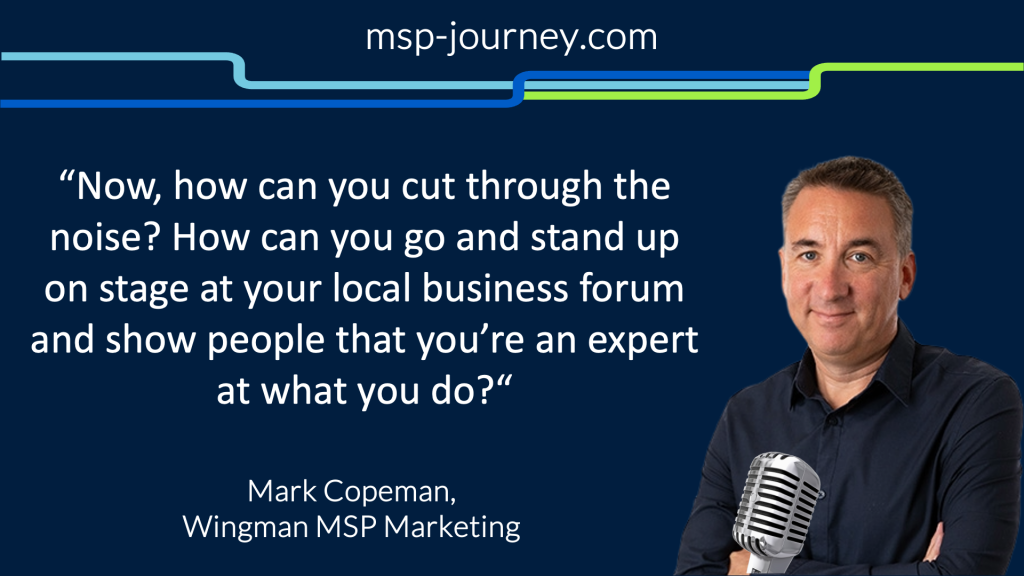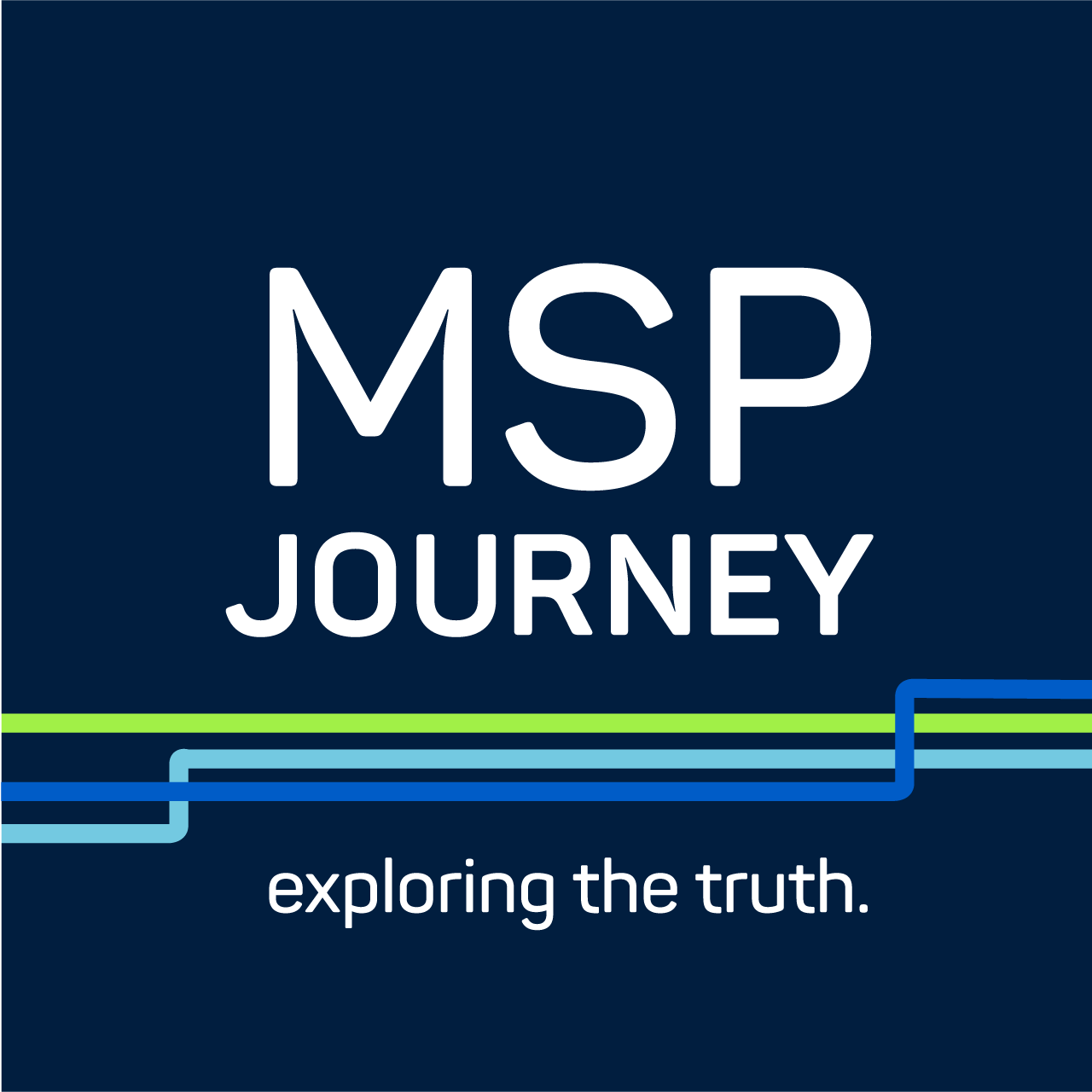Olaf: If you have to give a State of the MSP Nation speech, what’s your résumé for starting conversations on MSPs’ websites?
Mark: I guess I’ve never thought about a state of the nation before. So that’s, that’s really put me on the spot, but I like that. What’s at the core of what I believe is the sort of how we help people. Last calendar year – I actually looked in our CRM system – I had formal contact and conversations with 320 different MSPs around the world which is an incredible privilege really because you get a real insight into the industry and the majority, if not all of those businesses struggle with marketing.
And it’s not a surprise. Typically, people who found these sorts of businesses are IT people. That’s what they know, that’s what they love, that’s what they’re trained in. And so, why should they know about marketing and sales? You can’t be expert at everything. Our philosophy is all around how can you as an MSP start a conversation? And what I mean by that is I’m a firm believer that in our industry, people will buy from people for years and years and years. And MSPs really for me are selling trust first and foremost, and IT almost comes second. So for a prospect, for a potential customer to trust you, with the keys to their kingdom, as we say, and the ability to control and run IT and infrastructure for a business, it’s a big deal. And so you have to have that trust there. So starting conversations with people for me is very much the beginning of that sales process.

For example, if I start a new MSP. How should I begin with this personal communication with all the possible channels I might need to use?
I think if you are gonna embark on this journey and you’re perhaps, let’s say you might be a technician within another business and you think, okay, I can do this better. I can do it alone. I see an opportunity. And it’s very, very tempting I think to go off and buy that stack, you know, invest heavily in in the technology and then kind of, you know, open the doors and go, right, come on then let’s go. And of course life doesn’t work like that. And for me, I think if you’re in thinking about embarking on this sort of journey, starting with that plan to win your first one or two or three customers is a much, much better place to start than doing the things I know traditionally people love, which is getting their hands dirty with the technology and working out how to do all this stuff. Because there’s no point in making this huge investment if you then go, well, I don’t know how to win my first customer. So spend your time thinking about that first of all. And that may be opening your address book.
It may be looking at your LinkedIn network. It may be going to have some lunches and dinners with a few close people to sound them out, to find out if they might be interested in being that test first customer. There are maybe three or four people around me that this could work with, then go and buy the technology and then go and make it happen. But start with… I’m going to call it the hustle factor, Olaf. Forget the mass mailings, forget the social media. When you are beginning and you are starting up, you’ve got to go one to one and ask those questions and buy those lunches.
Maybe it’s not a good idea to skip contact with all my existing customers. What do you recommend for these conversations? I have found that existing customers are not given as much attention as they deserve. What is your opinion on this?
Good question. And I think it is very easy to forget to educate your current customer base. So there’s two angles I’d come at it from. The first one is perhaps a bit more obvious. The second one is less so. And I hope it’s valuable for people. So the first one is, and look, we do this for people is that that kind of monthly or maybe quarterly, depending on the cadence, what, you know, what, what’s most appropriate.
Newsletter, email newsletter or frankly you know depending on how many customers you’ve got, when was the last time you received something through the post? You know it’s pretty rare. So actually printing that newsletter and sending it, providing it has something in there of interest is potentially a good idea because it actually gets noticed. It might get noticed more than doing it via email. But I think the content within that newsletter obviously needs to resonate with those customers and it needs to talk about your business and the things that are going on and the people within it. It might be a roundup of some of the technology news, which you know might be useful to them. There’s a whole bunch of things that you can put into that. And I think it’s just something you need to get into as a matter of course to help continue to be.
As I say, educating, but also just staying in touch. So that’s a very obvious answer, I think. The less obvious answer, and this is something I’ve tried to practice for many, many years, and it only really works if everybody in the business is doing it, and that is those ad hoc moments of communication and this falls right down to technicians on the help desk as well and some people may smile at me and go, you know, that this is never going to happen, but it can happen and I’ve seen it working before. And that is, you know, you’re aware somebody is rolling out a particular project and you as that technician are grabbing of all sorts of content, which is out there because it’s part of your job. You want to stay up to date. When was the last time you thought, oh, that might be interesting for the customer over there and just grab a link and email “I saw this and thought of you”. When was the last time anybody did that? And when you do receive something like that, it means the world. It’s personal, that individual has been thinking about them. And the best way to do this for me is to use a tool like Feedly. I think Olaf, you and I are old enough to know what an RSS feed is. They still exist. They’re attached to every blog feed out there. It’s one of those undervalued things. So use a tool like Feedly, set up a bunch of feeds, and for 10 minutes every morning before you start your day, run through them. And then if you see something interesting, go send it to a customer. And that gets remembered. So that might be an interesting idea for people.
Please click here to find more helpful content from Mark:
https://wingmanmspmarketing.com
